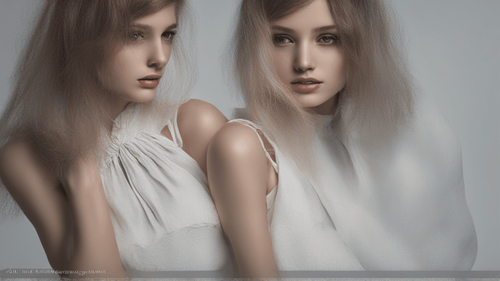
Introduction
In a world fueled by innovation and technology, the realm of art is experiencing a revolution of its own. Enter Photo Art AI, an intriguing blend of artificial intelligence and creative expression that has taken the art world by storm. This article delves into the captivating world of Photo Art AI, exploring its significance, applications, and the exciting possibilities it offers to both artists and enthusiasts.
Photo Art AI: A Fusion of Technology and Imagination
At its core, Photo Art AI represents the marriage of cutting-edge technology and human imagination. By harnessing the power of advanced algorithms, machine learning, and neural networks, artists can transform ordinary photographs into extraordinary works of art that evoke emotions, challenge perspectives, and stimulate the senses.
The Evolution of Artistic Expression
From Brushstrokes to Binary Code: A Brief History
Art has always been a reflection of the human experience, evolving alongside advancements in culture and technology. From the earliest cave paintings to the Renaissance masters and modern abstractionists, art has embraced change and innovation. Today, Photo Art AI stands as a testament to the art world's continued evolution, pushing boundaries and redefining creative expression.
AI as the Modern Artistic Medium
In an age where digital technology pervades every aspect of our lives, AI has emerged as a new medium for artistic expression. This tool empowers artists to transcend the confines of traditional techniques and explore uncharted territories of creativity. The result? A fusion of human ingenuity and machine intelligence that gives birth to mesmerizing visual narratives.
The Inner Workings of Photo Art AI
Understanding Neural Networks
Central to the magic of Photo Art AI are neural networks—complex systems modeled after the human brain. These networks analyze patterns, textures, and structures within photographs, learning to mimic artistic styles, such as Impressionism, Cubism, and Surrealism. The AI then applies these learned styles to transform images into captivating artworks.
Training Data and Algorithmic Learning
Behind every stroke of AI-generated genius lies a trove of training data. The neural networks are fed vast collections of artistic masterpieces, teaching them to discern and replicate unique styles. As the AI learns, its algorithms evolve, enabling it to produce increasingly sophisticated and authentic-looking compositions.
Applications of Photo Art AI
Artistic Exploration and Innovation
For artists, Photo Art AI offers a boundless realm of experimentation. It serves as a digital canvas where creators can collaborate with algorithms to produce unprecedented visual experiences. This technology encourages artists to explore new techniques, styles, and dimensions that may have been unimaginable before.
Personalized Visual Storytelling
Beyond the canvas, Photo Art AI has paved the way for personalized visual storytelling. Photographers and individuals alike can transform their cherished moments into artistic narratives, adding an extra layer of emotional depth and intrigue. Whether it's a wedding photograph, a scenic landscape, or a candid snapshot, AI transforms these images into tales that resonate deeply.
The Impact of Photo Art AI on Society
Democratizing Artistic Expression
Historically, art creation was limited by factors such as access to materials, training, and resources. Photo Art AI breaks down these barriers, democratizing artistic expression. Aspiring artists, regardless of their background or experience, can now access tools that enable them to create captivating art that resonates with audiences around the globe.
Catalyst for Collaborative Creations
Photo Art AI has become a catalyst for collaboration between humans and machines. Artists are collaborating with AI systems to co-create artworks that challenge conventions and redefine artistic norms. This partnership between human ingenuity and algorithmic insights has the potential to birth entirely new art movements.
FAQs about Photo Art AI
How does Photo Art AI work?
Photo Art AI uses neural networks and machine learning algorithms to analyze and replicate artistic styles, transforming regular photographs into stunning works of art.
Can anyone use Photo Art AI?
Absolutely! Photo Art AI tools are designed to be user-friendly, allowing both professional artists and enthusiasts to explore its creative potential.
Does AI replace human creativity?
No, AI complements human creativity by providing new tools and avenues for expression. It's a collaboration that enhances artistic possibilities.
Is Photo Art AI only for professionals?
Not at all. Photo Art AI tools cater to artists of all skill levels, from novices to professionals, fostering a diverse and inclusive creative landscape.
Are there ethical concerns about AI-generated art?
Indeed, there are discussions about authorship, originality, and the role of AI in art. These discussions contribute to shaping the future of AI-generated creations.
What's the future of Photo Art AI?
The future is promising. As AI continues to evolve, so will its artistic capabilities, leading to even more groundbreaking and innovative visual creations.
Conclusion
In the ever-evolving world of art and technology, Photo Art AI stands as a remarkable testament to human ingenuity and innovation. It empowers artists to explore uncharted territories of creativity while democratizing artistic expression for all. This fusion of technology and imagination not only transforms photographs but also challenges our perceptions of what art can be. As AI continues to advance, the journey of discovery in the realm of Photo Art AI promises to be both thrilling and transformative. So, why not embark on this artistic adventure and witness the future of creativity unfold before your eyes?